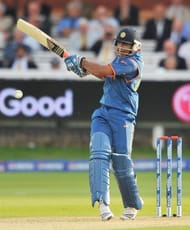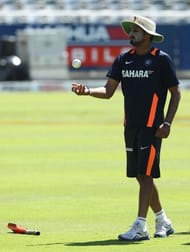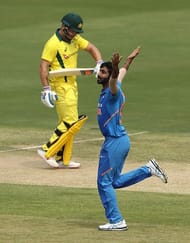
The Indian Premier League has established itself as one of the most successful leagues in the world. After the initial reluctance from BCCI to embrace the T20 format of the game, the triumph in the inaugural edition of the World T20 in 2007 for Team India paved the way for the establishment and growth of the league.
The blend of cricket and entertainment led to the huge popularity of the tournament right from the first season in 2008. The league has provided the domestic players a platform to play with and against the stalwarts of the game.
Several players like Hardik Pandya, Jasprit Bumrah, Axar Patel, Washington Sundar, Mayank Markande, etc. have been fast-tracked into the national team after their impressive performances in the IPL.
The IPL has also introduced different innovations like strategic time-out, fairplay award, longest six challenge, orange cap, purple cap, fan army, VIP box, etc. With IPL 2019 set to begin soon, let us have a look at some new rules which could be introduced to make the tournament even more exciting.
#1 Super Sub
In 2005, the ICC had introduced a new rule which allowed the teams to substitute a player in the playing XI with a 12th player, who was referred to as ‘Super Sub’. The rule proved useful on numerous occasions, but was discontinued after a short time owing to some of the drawbacks.
Most significant of those drawbacks was the fact that the teams were required to name their assigned ‘Super Sub’ before the toss, which favoured the team winning the toss.
The rule can be an exciting addition to the IPL with some modifications as under:
- IPL teams consists of two sets of players: Indian and overseas. Hence, the teams would name 13 players - at least 8 Indians and up to 5 overseas.
- The teams can assign the two ‘Super Sub’ players after the toss from among the 13 players mentioned above.
- Only one among the two ‘Super Sub’ players can be a substitute and can come in at any point in the match.
- Only the player who comes in as a ‘Super Sub’ would be accorded with the appearance in the particular match.
This rule will enable the teams to pick specialist batsmen and bowlers who can perform consistently rather than bits and pieces players.
#2 Batting Powerplay

In T20 cricket, the first six overs of an innings consist of a Powerplay during which only two fielders are allowed outside the 30-yard circle. After the conclusion of Powerplay, a maximum of five fielders can be placed outside the circle.
The current rule of Powerplay is monotonous, and the teams often tend to be cautious about not losing too many wickets in the early phase of the innings.
The current rule can be tweaked a little for the IPL to make it more interesting and tactical. The six overs of the Powerplay can be split into two phases - four overs of mandatory Powerplay (overs 1 to 4) and two overs of ‘Batting Powerplay’.
The batting team could be allowed to select any two-over phase after the fourth over as ‘Batting Powerplay’.
The rule would be similar to the rule of ‘Batting Powerplay’ used previously in the ODI format, but would not have a restriction of the over number up to which the Powerplay can be taken (in ODI cricket, it was mandatory to complete the Batting Powerplay before the 41st over of the innings).
The rule would allow the batting side to derive the maximum advantage of the fielding restrictions by using them tactically.
#3 Strategic retirement of a batsman

The T20 format is a fast moving format. The complexion of the game changes very quickly, and the players have to be proactive and innovative in their approach.
But while the bowling team has an advantage to rotate the bowlers as per the situation of the game, the batting team does not have the luxury of replacing a batsman who struggles to get going.
A new rule could be introduced in the IPL which would enable the batting side to strategically retire a batsman if they feel that he is not meeting the demands of the situation. The batting team could be allowed to strategically retire one batsman per innings. The ‘retired’ batsman can then return any time after a fall of wicket.
The rule could also be used in such a manner that the power-hitter is allowed to bat in the fielding restrictions after which he would ‘retire’, only to come back in the slog phase of the innings. Also, a team may preserve the best batsman by ‘retiring’ him if the opposition bowlers are bowling a tough spell.
#4 Award for the bowler with most dots

The slam-bang nature of the T20 format means that the batsmen remain the main attractions. However, amidst the power-hitters, the bowlers have been able to carve their own niche with their different skills and variations.
But despite their vital contributions, the bowlers are not recognized at par with the batsmen.
The awards given during the IPL matches include the likes ofmaximum sixes award, award for the player with the highest batting strike rate, award for a great catch, award for innovative moment, etc. None of these awards focuses on the bowling department, which also needs recognition.
Hence, a new award could be introduced for the bowler bowling the highest dot deliveries in the particular match. Alternatively, the bowler with the best economy rate during the match can also be awarded.
#5 Back-to-back overs for a bowler

In the T20 format, different bowlers have different skill sets, and have a tendency to prove effective in specific phases of the game. The bowlers, however effective they may be, cannot bowl more than their quota of 4 overs, unlike the batsmen who can farm the strike and bat for maximum deliveries. Hence, the overs of the bowlers need to be used judiciously.
The IPL can introduce a rule wherein a bowler is allowed to bowl two overs back-to-back. The bowling team can be allowed to avail this benefit once in an innings.
A bowler in midst of a great spell can bowl 12 deliveries on the trot, thereby enabling his team to gain an upper hand. Similarly, in the slog phase of an innings, especially while defending a target, the captain can have two consecutive overs of his reliable bowler, which would make the task of the batsmen difficult.
On the other hand, if the opposition team is consolidating the innings after a loss of some quick wickets, two overs of a part-time bowler can be used.
Get real-time updates on IPL 2025, live scores, IPL Prediction, match schedule, points table,Result & squad -CSK, MI, RCB, KKR, SRH, LSG, DC, GT, PBKS
